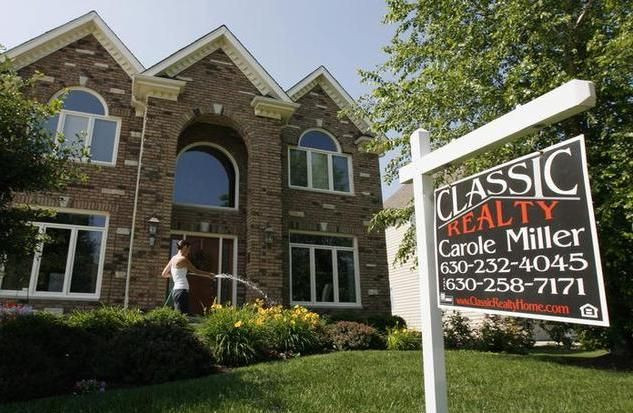Housing Market: Five Tips For US Home Sellers
Analysis

To say that these are challenging times for U.S. home sellers would be an understatement.
The U.S. economy is growing at a sluggish 2 percent rate. The U.S. unemployment rate is still high, at 7.9 percent, but job growth, while not robust, appears to be trending toward an average of 200,000 new jobs per month. However, Democrats and Republicans in Washington appear to be set for another showdown over the U.S. budget – i.e. another round of brinkmanship that could stall the U.S. economic recovery.
Against that backdrop, it’s no wonder that houses aren’t selling at a robust rate. The National Association of Realtors reported that December U.S. existing home sales fell 1 percent to a seasonally adjusted annual rate of 4.9 million units.
Further, while the median U.S. price of an exiting single-family home rose to $180,300 in December, a 10.9 percent increase compared to a year ago in December 2012 – that’s still not high enough for many prospective sellers, who are trying to recover their purchase when selling their home – a lot have homes with a market price less than their outstanding mortgage balance.
The data represent tell-tale stats. Still, is there any way U.S. home sellers can increase the likelihood of selling their home in what remains a buyer’s market?
Indeed there is, and listed below are 5 tips -- five 'SWAT' (special weapons and tactics) that should better position your home for a sale.
1. Incentives – In this market, it’s all about distinguishing your home from the pack.
You have a 3-bedroom, $500,000 home in suburban Miami or Los Angeles? Consider throwing in four choice seats to a Miami Heat basketball game this spring or a Los Angeles Dodgers baseball game, or two tickets to a popular Broadway show if you’re selling a home in the New York metropolitan area. Another option: two dinners-for-two at any of your city’s superior restaurants.
You’d be amazed at how many potential buyers will attend your open house, just due to the incentives.
2. Enhanced marketing – If you haven’t already, now is the time to get acquainted with online social networks, especially Facebook. Those over age 40 generally are not as social-media savvy as the younger crowd, so have your teen/college-age son or daughter set it up, if that’s possible. The social media visibility will enhance your real estate agent's promotional operation.
3. Self-finance – This obviously is not an option for all home sellers, but consider floating a note – i.e., be willing to issue a short-term loan at a reduced interest rate to the buyer, for a three-year or five-year period. The loan should specify that if the buyer fails to qualify for a conventional, fixed-rate mortgage or otherwise defaults, you re-take possession of the home.
To be sure, mortgage rates are incredible low, averaging about 3.60 percent for a 30-year, fixed rate mortgage – that’s down about 1 percentage point from 18 months ago - but if you take a note for 3 percent or 2 percent for 5 years, you’ll make more prospective home buyers eligible to buy your home. At the end of the note, they can apply for a conventional 30-year or 20-year fixed-rate mortgage with a bank: Chances are, they'll be in a better position to be approved, as they'll have more equity in the house, they'll have side-stepped today's rigorous mortgage qualification requirements -- and you'll be paid in full.
4. Lease It – Again, for some home sellers, this is not practical, but if you can, consider leasing the home for one year or longer. The advantage is obvious enough: Leasing extends your sales window, and when the lease expires, U.S. housing market conditions may have improved. Some sellers are leasing their home for even less than their monthly mortgage payment: in the long run, if home sales rebound, they should recover their month-to-month loss.
5. Lower The Price -- Obviously consult your realtor -- and a good attorney or real estate appraiser who knows your local real estate market-- before considering this step. But be careful: Lowering your price signals additional market softness to prospective home buyers, who may wait even more, to get a better deal.
In other words, buyers don’t tend to buy when prices are dropping: when they drop, they wait to see if prices will decline more. The uptick in buyers occurs when home prices start rising, as buyers then sense a price bottom may have formed, and conclude that buying now may save them money on the home transaction.
Finally, do a little cross-reference/audit work regarding the average home price for your area that your home specialist cites, by checking surrounding, comparable home sale prices in your area at zillow.com.
U.S. Housing Market: Preparation, Creativity Pay Off For Sellers
There’s no way to sugar-coat – the U.S. housing market, with a few local exceptions, remains a decidedly "buyer’s market," and it will take at least two to three more quarters -- and probably longer – for the U.S. economy to strengthen, add more prospective home buyers to the market, and lift home sales further to give some leverage back to home sellers. What’s really needed is enduring job growth at/above 250,000 new jobs per month to convince on-the-fence home buyers that the U.S. economy has progressed to a self-sustaining expansion. Absent that, the scale in the home sale equation will remain tipped in favor of the buyer.
But if you offer incentives, take full advantage of social marketing tools like Facebook, consider offering a short-term loan, or offer to lease your home, all other factors being equal, you’ll better position yourself in today’s challenging U.S housing market.
© Copyright IBTimes 2024. All rights reserved.





















